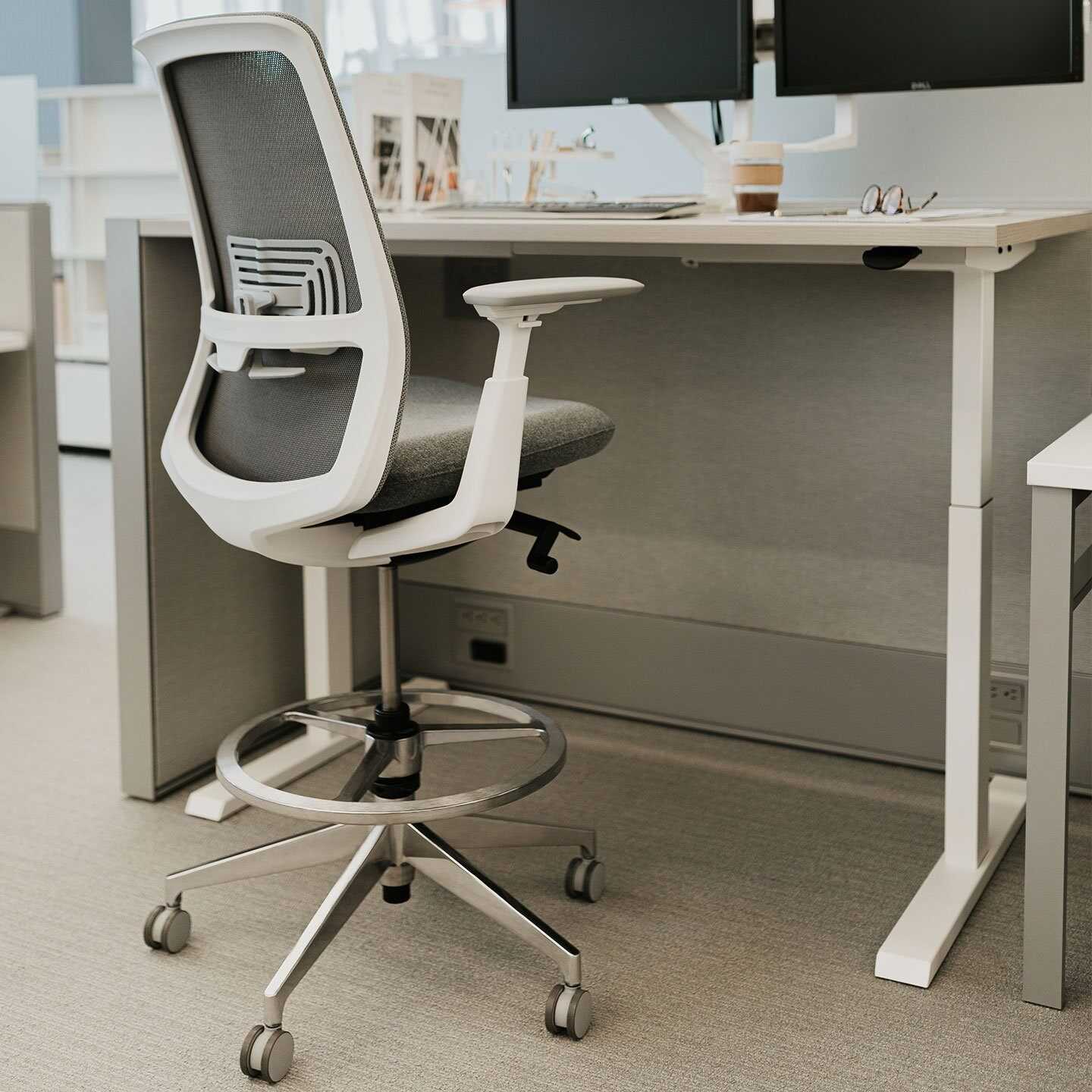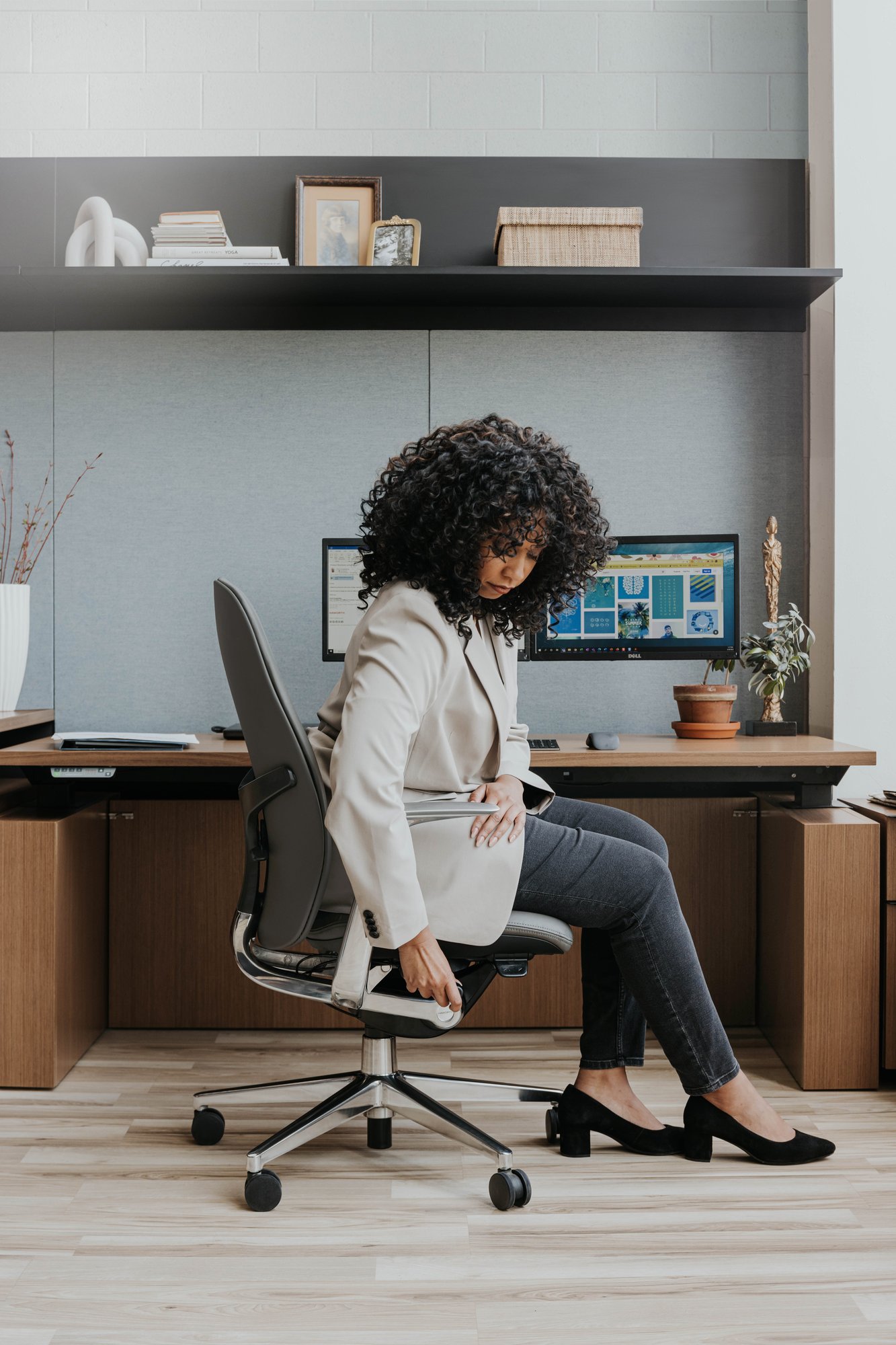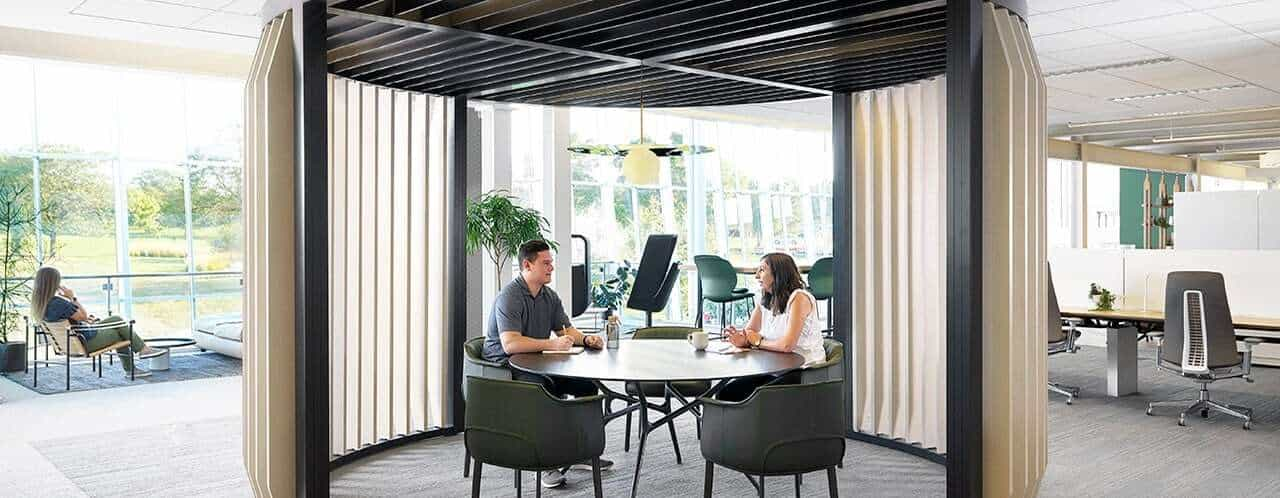Desk Seating
You work hard; your chair should too.
People interact with chairs more than just about any other piece of furniture in their daily lives. At work, it is no different. Selecting the right office seating is a crucial piece of the puzzle in designing a productive office where people can love the way they work.

Why is Seating so Important in the Office?
At Office Interiors, we believe everyone deserves to be comfortable at work. Seating is a crucial part of your offices’ ergonomics. Your chair should be comfortable, aesthetically pleasing, ergonomic and can be adjusted to meet the needs of everyone on your team.
You will spend almost one-third of your day in a chair. If that seat isn’t comfortable, how are you possibly supposed to love the way you work?
Must-Have Features for the Perfect Ergonomic Chair
When it comes to selecting an ergonomic task chair, make sure it comes standard with these features:
- Adjustability – The more aspects of the chair that can be adjusted, the better. You want to be able to change the height, armrests, and reclining angle.
- Armrests – Match the height of your typing or writing surface so that your shoulders are not hunched
- Seat Depth – This is what causes strain on your legs and back. An appropriately configured chair will have three to four fingers of depth between the back of your knees and the edge of your seat.
- Comfort – No matter how great the rest of the chairs features are, if it isn’t comfortable, you won’t want to spend hours working in it.
- Lumbar Support – A good office chair will have support for the lower back. Some of the premium chairs have adjustable lumbar support to allow the user to fit the chair to their lower back.

Questions to Ask When Selecting Office Seating
Ok, so now that we have discussed to death why picking the right seating for your office is so important and what seating options you have available, how exactly do you decide which seating option is right for your office?
There are a few critical questions that, once answered, will point out which type of office seating solution will best fit your needs and drastically speed up the process of specifying your furniture once you decide you are ready to buy.
-
How do you plan on using the seating?
-
How mobile or reconfigurable does the seating need to be?
-
Where will the seating be used?
-
Who are the users?
-
How soon do you need the seating?
-
What types of finishes do you want?


How Workspace Planning Can Help Your Bottom Line
Q + A With April Doucet, a Workspace Planner at Office Interiors.
How Much Does Office Seating Cost?
Regardless of the category, however, keep in mind that as you add features, customizations or premium finishes, you will increase your final price. That can be considered a universal rule when pricing any office furniture.
We have bundled these three categories as there is a sizeable overlap between the three classifications. There is nothing to say that you can’t equip your entire team with executive task chairs, and some of the more premium conference chairs are virtually indistinguishable (by feature, appearance or price point) from many task chairs.
For this reason, we suggest you budget at least $350 when looking to purchase a task chair, conference chair or executive task chair. For a more detailed breakdown of what impacts the price of these popular chairs, check out our full article titled “how much does a task chair cost.”

Visit Our Online Store
Take the work out of furnishing your workspace.
Browse through countless options and choose ergonomic office solutions that make you feel best from the comfort of your home (or anywhere). Create your team or home office in a few clicks and have your items delivered straight to your door.
Request a Free Consultation
Do you have a few more questions you want help answering before you pull the trigger on an ergonomic chair for yourself? Or maybe you would like to see them in action first?
We are here to help! All of our consultations are completely free, request one today and we can answer your remaining questions and arrange for a viewing of our working showroom where you can see a variety of ergonomic chairs across multiple price ranges.

